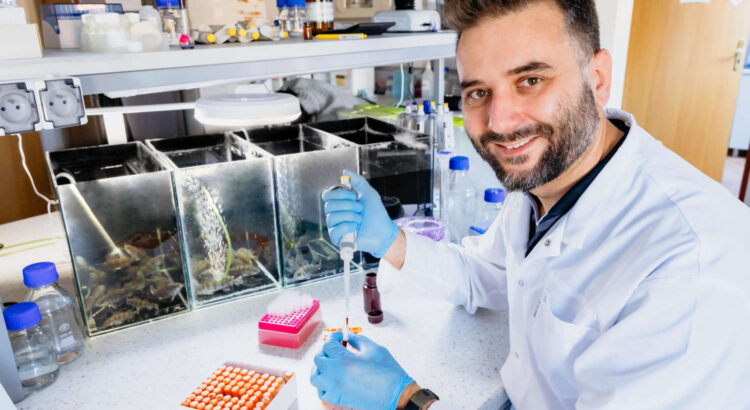Fish eggs are among the largest sex cells in the vertebrate world, but the processes and mechanisms within them are not yet fully known. In perch, one of the unknowns is the influence of factors from the parents on the quality of the offspring – the larvae. The answer is being sought by scientists from the Department of Gamete and Embryo Biology of our Institute.
– We know little about parental influence on offspring quality in most domesticated fish species. In the case of perch, no such data are available at all. Therefore, we are looking for an answer to the question of what factors on the part of the female and/or the male make one fish of their offspring qualitatively better and the other worse – explains study leader Dr Daniel Żarski from the Department of Gamete and Embryo Biology of the IAR&FR PAS in Olsztyn.
„PACKAGE” WITH A SET OF EXPERIENCES
Key to understanding these factors is the study of eggs and larvae at the molecular level. Fish eggs are some of the largest sex cells in the vertebrate world – they have a lot of different kinds of molecules in them, including a lot of spare material (mainly in the form of fats and proteins), which allows the fish larvae to continue to develop for some time after hatching. This is because fish in our climatic zone spawn and in most cases abandon their eggs (there is no gestation stage as in mammals or egg-laying as in birds), so such a cell, in order to develop on its own, must be adequately protected and supplied „for the immediate future”.
As in any other cell, there are a number of different molecules in the egg besides the DNA itself. – We looked specifically at the mRNA, where there is encoded information that the mother wants to pass on to her offspring – a set of experiences from a whole year, such as the stress she has experienced or interactions with other fish or predators. All this information is passed on by the mother to the egg so that the offspring, at least initially, are prepared for the problems they may encounter. We call this non-genetic inheritance – says the fish reproductive scientist.
This information is easily modifiable – the mother 'updates’ it every year on the occasion of each reproduction.
– Among other things, precisely because of the factors to which the female has been exposed recently, one year her offspring will be of better quality and the next year they may be of worse quality – adds Daniel Żarski.
Such factors that determine the quality of the offspring – here understood as the ability of the larvae to hatch and to adapt to the rearing conditions – are numerous. Not only on the part of the mother, but also on the part of the father, and they are still not fully known.
ON THE HALFWAY
Daniel Żarski’s team is working on solving this issue, conducting research as part of the project entitled 'Transcriptomic and zootechnical analysis of parental influence on offspring quality in perch, Perca fluviatilis’, funded by the National Science Centre (NCN).
We are halfway through the project. We have already carried out 4 of the 6 planned experiments (plus one additional one), and we have to remember that under our climate conditions we are able to carry out reproductive studies on perch only once a year – in spring, when the fish are spawning. One of the biggest challenges so far has been to carry out an experiment comparing two extremely different phenotypes, i.e. larvae from wild, domesticated fish and their crosses. We are now analysing the collected data, the preliminary results of which seem very promising – the scientist points out.
The researchers still have an experiment ahead of them which is expected to help decipher what causes twin offspring to have different growth potential and, as a result, to be of different sizes.
– Our project is not based on specific hypotheses, but is an exploratory project. In other words, we are trying to understand these mechanisms that we observe, rather than 'squeezing them’ into a top-down framework – emphasises Daniel Żarski.
The project started in 2021 and will last until 2026. The amount of funding is more than PLN 2.8 million. IAR&FR’s partner in the project is the Stanisław Sakowicz Inland Fisheries Institute in Olsztyn.
OBJECTIVE: TO SET THE STANDARDS
According to Daniel Żarski, the knowledge gained through the project’s research will not only contribute to the advancement of science on the topic of perch fish reproduction and larviculture, but may also find applications in aquaculture in the future.
– Perch are the right species to study for several reasons: they are much larger than typical model fish, they have high fecundity, they are a young species phylogenetically, and they have a large and growing breeding potential. Therefore, our overarching goal is to set some standards for creating selection criteria, always much needed by breeders,” explains Daniel Żarski.
